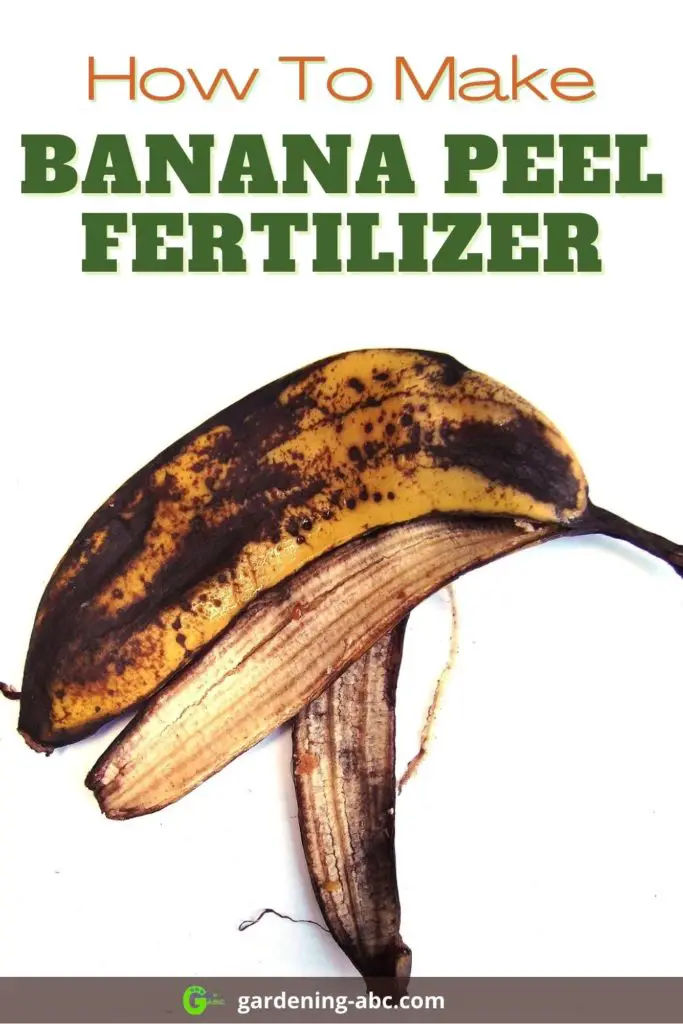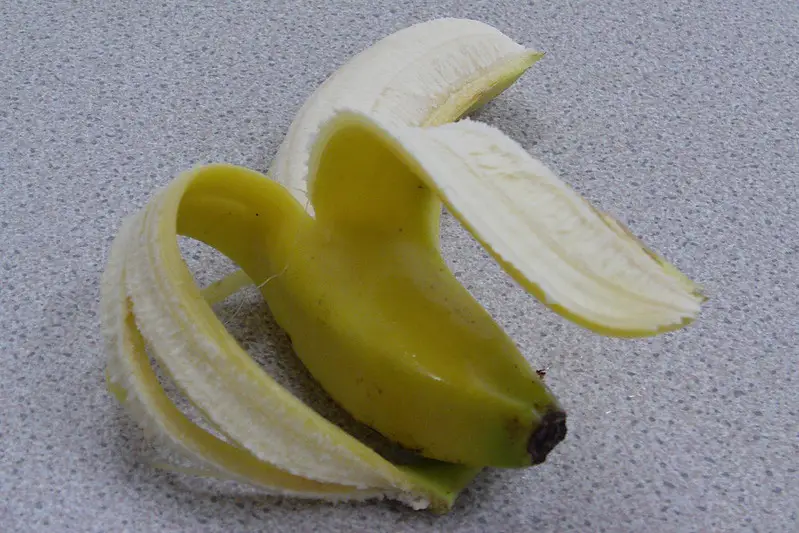We use affiliate links to run our site. When you buy through links on our site, we may earn an affiliate commission, without any added cost to you. Learn more
Hey there, fellow plant enthusiasts! If you’re anything like me, you’re always looking for ways to help your green friends grow bigger and better.
Well, have you ever considered using banana peels as fertilizer? Yep, you read that right – those discarded bits of banana can actually do wonders for your plants!
Now, I know what you might be thinking – “Banana peels? As fertilizer? That sounds too good to be true!” But trust me, it’s the real deal.
In fact, using banana peels as fertilizer is not only an effective way to nourish your plants, but it’s also a cost-effective and eco-friendly alternative to chemical fertilizers.
In this comprehensive guide, we’ll walk you through everything you need to know about using banana peels as fertilizer.
From the nutrients found in banana peels, to how to prepare and use them for different types of plants, to tips for getting the most out of your banana peel fertilizer – we’ve got you covered.
So grab a banana, sit back, and let’s dive in!
Nutrients in Banana Peels:
So, you may be wondering – what exactly makes banana peels so nutrient-rich? Well, as it turns out, banana peels are loaded with all kinds of goodies that your plants will love. Let’s take a closer look at some of the key nutrients you’ll find in those yellow skins:
Potassium: This mineral is one of the most important nutrients for healthy plant growth, as it helps regulate water balance and promotes strong root development. And guess what? Banana peels are chock-full of potassium! In fact, they contain even more potassium than the flesh of the banana itself.
Phosphorus: Another crucial nutrient for plant growth, phosphorus helps with energy transfer and cell division. And wouldn’t you know it – banana peels are a great source of phosphorus, too.
Calcium: As you may already know, calcium is essential for building strong cell walls and supporting overall plant structure. And, you guessed it – banana peels contain calcium as well.
Now, you might be thinking – why are these nutrients so important, anyway? Well, here’s the deal: plants need a balance of different nutrients in order to grow and thrive. If they’re missing out on one or more key nutrients, their growth may be stunted or they may become more susceptible to diseases or pests.
By using banana peels as fertilizer, you’re providing your plants with a natural source of these important nutrients that can help them grow bigger, stronger, and healthier.
But wait, there’s more! It’s not just the individual nutrients that make banana peels such a great fertilizer – it’s also the ideal nutrient ratio they provide.
See, different plants require different ratios of nutrients in order to grow optimally. For example, tomato plants need a higher ratio of potassium to nitrogen, while lettuce prefers a more balanced ratio.
Luckily, banana peels contain a well-balanced mix of nutrients that can benefit a wide variety of plants. By using banana peels as fertilizer, you can ensure that your plants are getting the right nutrients in the right amounts – all while keeping your garden chemical-free and eco-friendly.
How to Prepare Banana Peels for Use as Fertilizer:
There are mainly two ways you can use banana peels as fertilizers:
1. The dry method:
First, Remove any stickers or residue from the peels, and cut them into small pieces. You can use a knife or a pair of scissors – the goal is just to break the peels down into smaller, more manageable pieces.
Dry the peels. This is a crucial step because moist peels can attract mold or other unwanted critters. There are a few different ways to dry banana peels, so choose the method that works best for you:
Oven drying: Spread the peels out on a baking sheet and place them in an oven set to the lowest temperature (usually around 200 degrees Fahrenheit) for several hours, until they’re dry and crispy.
Sun drying: Lay the peels out in a sunny, well-ventilated area (such as a porch or balcony) and let them dry naturally for a day or two.
Dehydrator drying: If you have a dehydrator, you can use it to dry the peels quickly and efficiently.
Now grind the peels. Once they’re dry, you’ll want to grind them up into smaller pieces to make them easier to incorporate into your soil. You can use a food processor, a coffee grinder, or even a mortar and pestle to do this.
You now have a batch of nutrient-rich banana peel fertilizer that’s ready to use in your garden. grinding the peels into smaller pieces makes it easier for your plants to absorb the nutrients.
You can also simply toss whole banana peels into your garden, but it would take a long time for them to break down and release their nutrients. By drying and grinding the peels first, you’re jumpstarting the decomposition process and making it easier for your plants to reap the benefits.
2. The Wet Method:
Another easy way to use banana peels as fertilizer is by preparing banana peel tea.
To do this, start by putting banana peels in a jar and then filling it with water. It’s important to cover the jar with cloth or some breathable lid to allow air circulation.
Leave the jar aside for a couple of weeks, and the peels will begin to decompose, releasing nutrients into the water. Once the peels have rotted, strain the liquid into another container and dilute it with water to use it as a fertilizer for your plants.
This method is similar to preparing compost tea and is an excellent way to make use of banana peels to improve the health of your plants.
Using Banana Peels to Fertilize Different Types of Plants:
Banana peels can be used to fertilize a wide variety of plants, from fruit trees to vegetables, and even roses. However, some plants are better suited to banana peel fertilizer than others.
Fruit trees, such as apple, pear, and peach trees, can benefit greatly from banana peel fertilizer. The high levels of potassium found in banana peels help to promote healthy fruit growth, and can even improve the flavor of the fruit.
Tomatoes are another type of plant that can benefit from the use of banana peel fertilizer. The potassium and phosphorus found in banana peels help to promote healthy root growth, which can lead to stronger, more productive tomato plants.
Using banana peels as fertilizer for roses can help to improve the health and beauty of your rose bushes. The potassium found in banana peels can help to promote healthy root growth, and can even improve the color and fragrance of the flowers.
Vegetables such as peppers, cucumbers, and squash can also benefit from the use of banana peel fertilizer. The nutrients found in banana peels help to promote healthy growth and can even improve the flavor of the vegetables.
To summarize, banana peel fertilizer can be a great addition to your gardening routine and can help to promote healthy growth for a wide variety of plants.
Whether you’re growing fruit trees, vegetables, or roses, there’s a good chance that banana peels can help to improve the health and beauty of your plants.
Conclusion:
Using banana peels as fertilizer is a simple and effective way to provide your plants with the nutrients they need to thrive.
By utilizing this organic material, not only are you improving the health of your plants, but you are also doing your part to protect the environment by reducing your reliance on chemical fertilizers.
Whether you decide to make banana peel tea, compost, or powder, the benefits to your garden will be noticeable. So why not give it a try and see for yourself?
If you found this article helpful, be sure to share it with your friends and family who may also be interested in natural gardening techniques.
And don’t forget to explore our site for more informative articles on a wide range of topics. From DIY projects to home decor, we’ve got you covered with all the tips and tricks you need to make your life easier and more enjoyable.
Thank you for reading, and happy gardening!
Why Do Banana Peels Turn Black?
If you’ve ever noticed that banana peels turn black over time, you may be wondering why. This is due to an enzyme called polyphenol oxidase, which reacts with oxygen and high temperatures to turn the skin of the banana black. Storing the peels in the refrigerator can slow down this process.
Are Banana Peels Good for Roses?
Banana peels are particularly good for roses, as the high levels of phosphorus and potassium help to promote flowering. Additionally, the calcium in banana peels can help to prevent blossom end rot disease in tomatoes.
However, please note that banana peels alone won’t be enough to feed your plants. For best results, use them in conjunction with other organic fertilizers or compost.
Can I use fresh banana peels as a fertilizer?
Yes, fresh banana peels can be used as a fertilizer. However, they are more difficult to work with and may attract pests. You can also dry and grind the peels into a powder before use.
How often should I use banana peel fertilizer on my plants?
Banana peel fertilizer can be used every few weeks during the growing season. However, it’s important not to over-fertilize as this can cause damage to the plants.
Will using banana peel fertilizer make my plants smell like bananas?
No, using banana peel fertilizer should not cause your plants to smell like bananas. The nutrients are absorbed by the soil and roots, and any odor should dissipate quickly.
Can I use banana peels as a fertilizer for all types of plants?
While banana peels can be used as a fertilizer for many types of plants, some may not benefit from their use as much as others. Tomatoes, peppers, roses, and citrus trees are known to respond well to the nutrients found in banana peels.
Are there any downsides to using banana peels as a fertilizer?
One potential downside of using banana peels as a fertilizer is that they can take a while to break down and release their nutrients. It’s important not to over-apply the fertilizer as this can lead to nutrient imbalances and other issues.
Additionally, banana peels should be used in moderation as their high potassium content can be harmful to some plants if overused.
Like the post? Don’t forget to PIN IT

Amazon and the Amazon logo are trademarks of Amazon.com, Inc, or its affiliates.

Hi there! My name is Prasenjit and I’m an avid gardener and someone who has grown a passion for growing plants. From my hands-on experience, I have learned what works and what doesn’t. Here I share everything I have learned.
